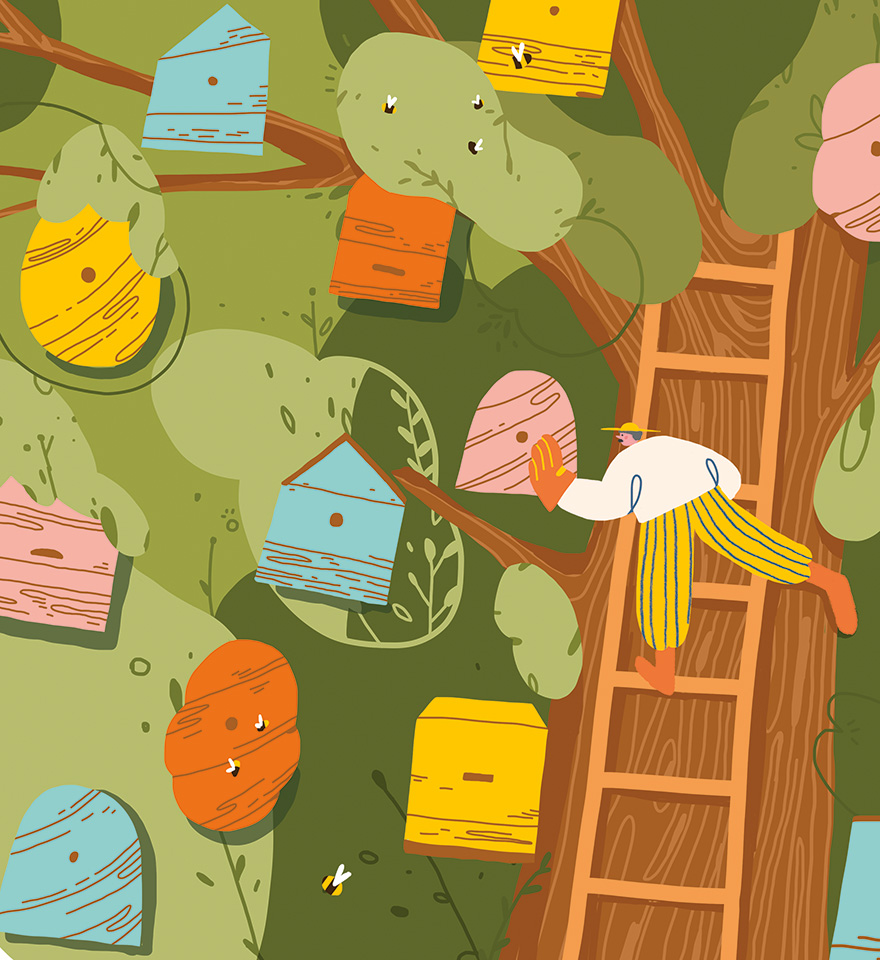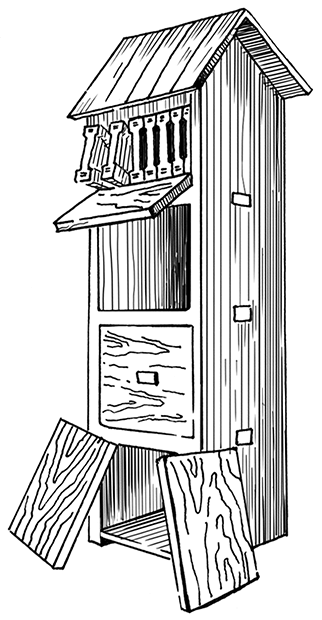ProkopovychPetro
July 10, 1775, Mytchenky village, Baturyn Sotnia of the Nizhyn Regiment of the Cossack Hetmanate (now Chernihiv Oblast, Ukraine) —
April 3, 1850, Palchyky village, Russian Empire (now Chernihiv Oblast, Ukraine)
Movable frame hive
Some people are going anywhere near bees, and there are so many of them that their fear even has a separate name — apiphobia. And some live happily with tens of thousands of bee families.

How many bees are in one family? At different times of the year from 20 to 80 thousand. Let’s do a little arithmetic and we get an average of half a billion bees.
Buzzzzzzzzz…
When Petro Prokopovych was 23 years old, he left the military service and with all his savings bought three tithes of land and a few ordinary, typical for that time, beehives gums, pieces of tree trunks, which were hollowed out and then inhabited by bees.
History says that in ten years he increased the number of beehives to 600, and also tells that the first eight years were like a chain of fuck-ups: without manuals on beekeeping or reliable mentors, gaining experience and “precise knowledge” in practice, Prokopovych lost about 300 bee families.
He learned how to deal with some losses quickly enough: he prevented bees from freezing in winter, treated the sick, etc. But it took him much longer to shift from using the traditional bee smoker with sulfur smoke during honey harvesting which regularly killed the best families.
Prokopovych began to order literature, and even foreign one, but in one of the letters he wrote: “... if I had started reading books earlier, I would not have created my bee care system ...”. He studied the experience of German, French and Hungarian beekeepers. He experimented with the shape of hives.
The immediate decision, according to the beekeeper engineer, came on the night of January 1, 1814. For the first time in the world, frames were used in the hive. This made it possible to inspect the bee family, monitor its development, and most importantly, collect honey without destroying the bees.
Information about the new hive spread around the world, and in 1828 Prokopovych opened a beekeeping school with a two-year curriculum, first in Mytchenky village, where he was born, and then on a specially purchased khutir Palchyky. Peasants from Ukraine, Belarus, Bashkortostan, Georgia, the Czech Republic, Hungary, Italy, Germany, and Poland studied at the school. All this was mostly at the expense of Prokopovych.
At that time, the apiary was already profitable. In addition, Prokopovych concluded an agreement on the constant supply of high-quality honey to the family of Emperor Nicholas I.
Prokopovych also wrote to Nicholas I when he found out that the new Moscow-Kyiv railway should pass near the apiary: “Please relocate the railway from my apiaries, because the bees are afraid of excessive noise, the smell of burning and soot. I will take care of all the costs of correcting the project and extending the railway.” In consequence, the railway does not pass near Hlukhiv and Baturyn, but through Konotop and Bakhmach.

Eventually, the apiary grew to 10,000 bee colonies and became the largest in the world. Even today, only a few apiaries in the country keep
It is interesting that in 1843,